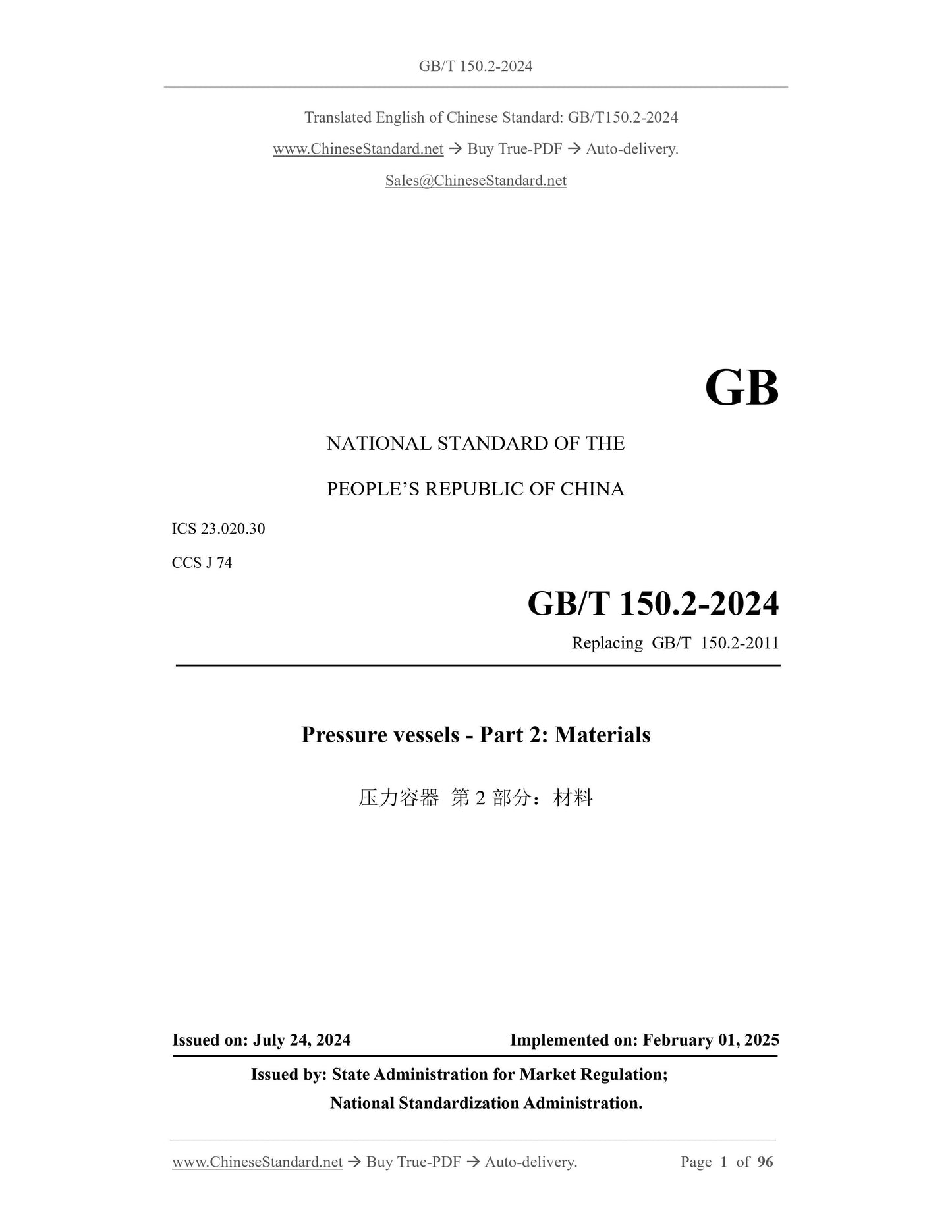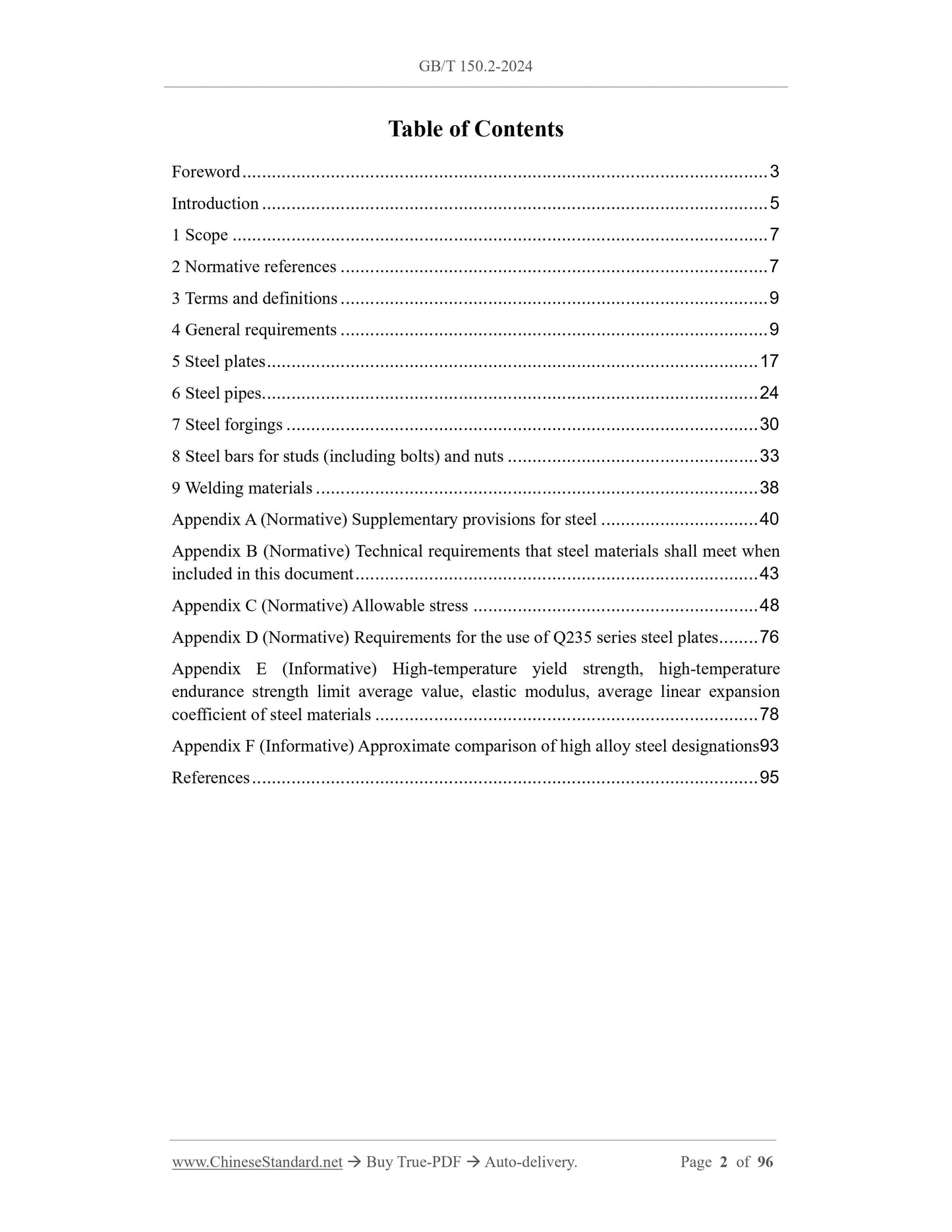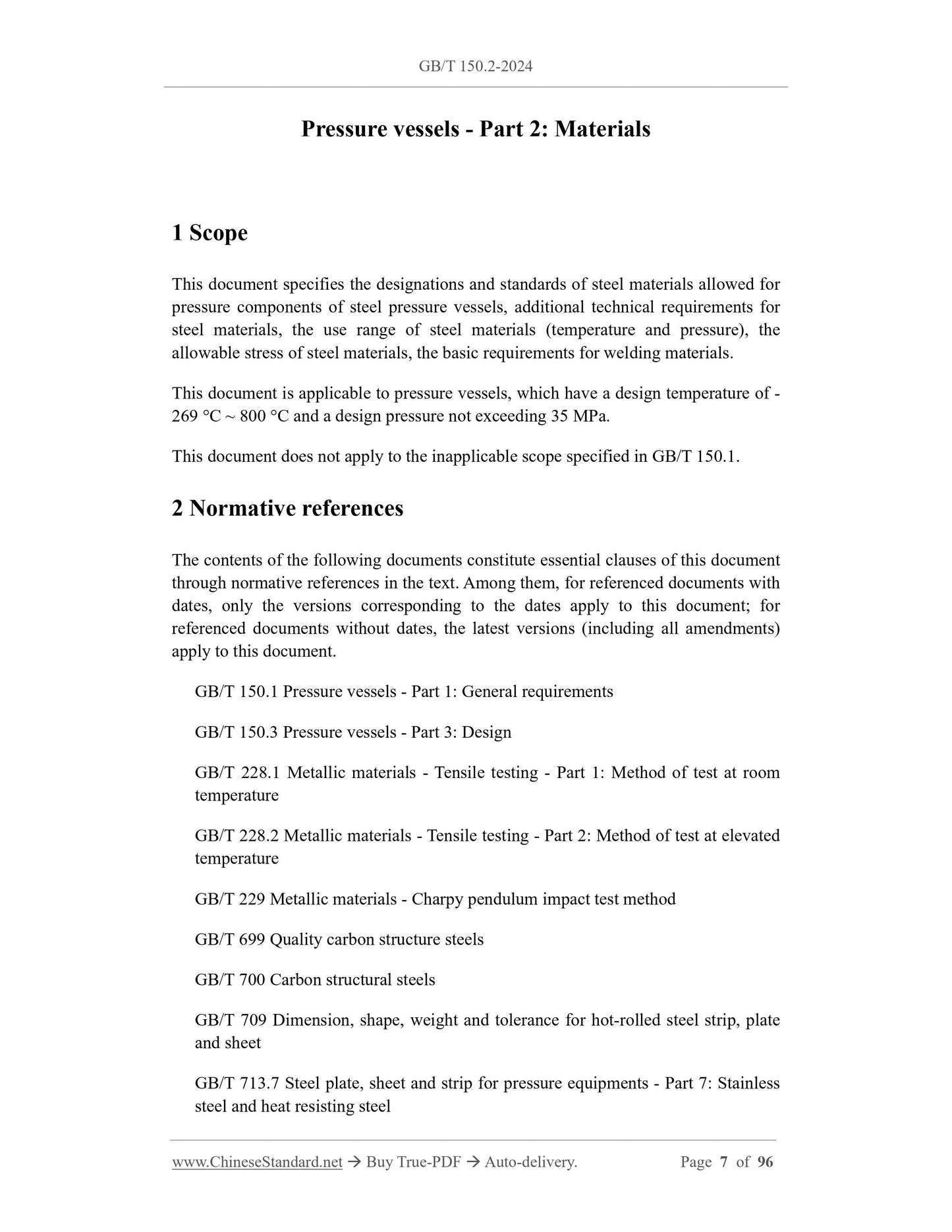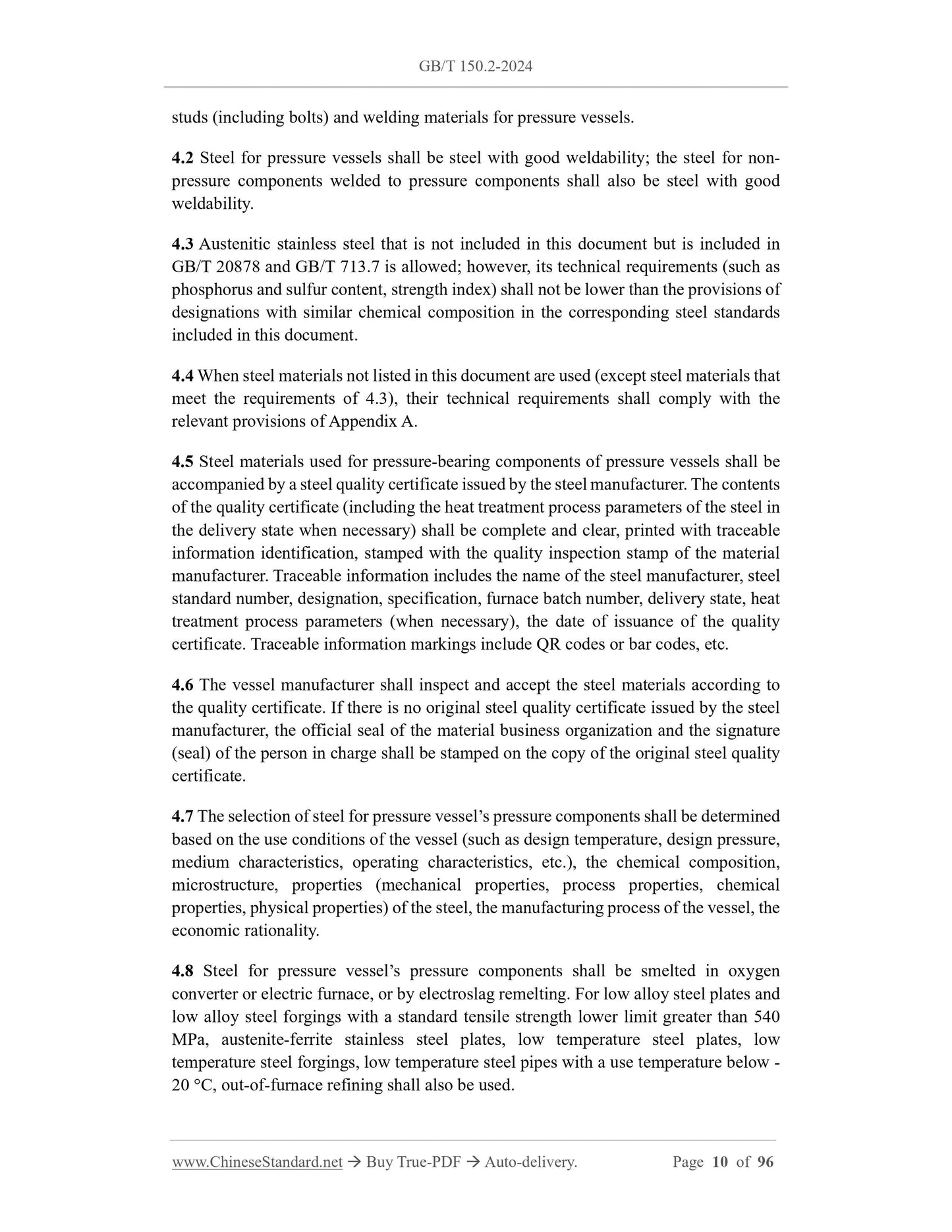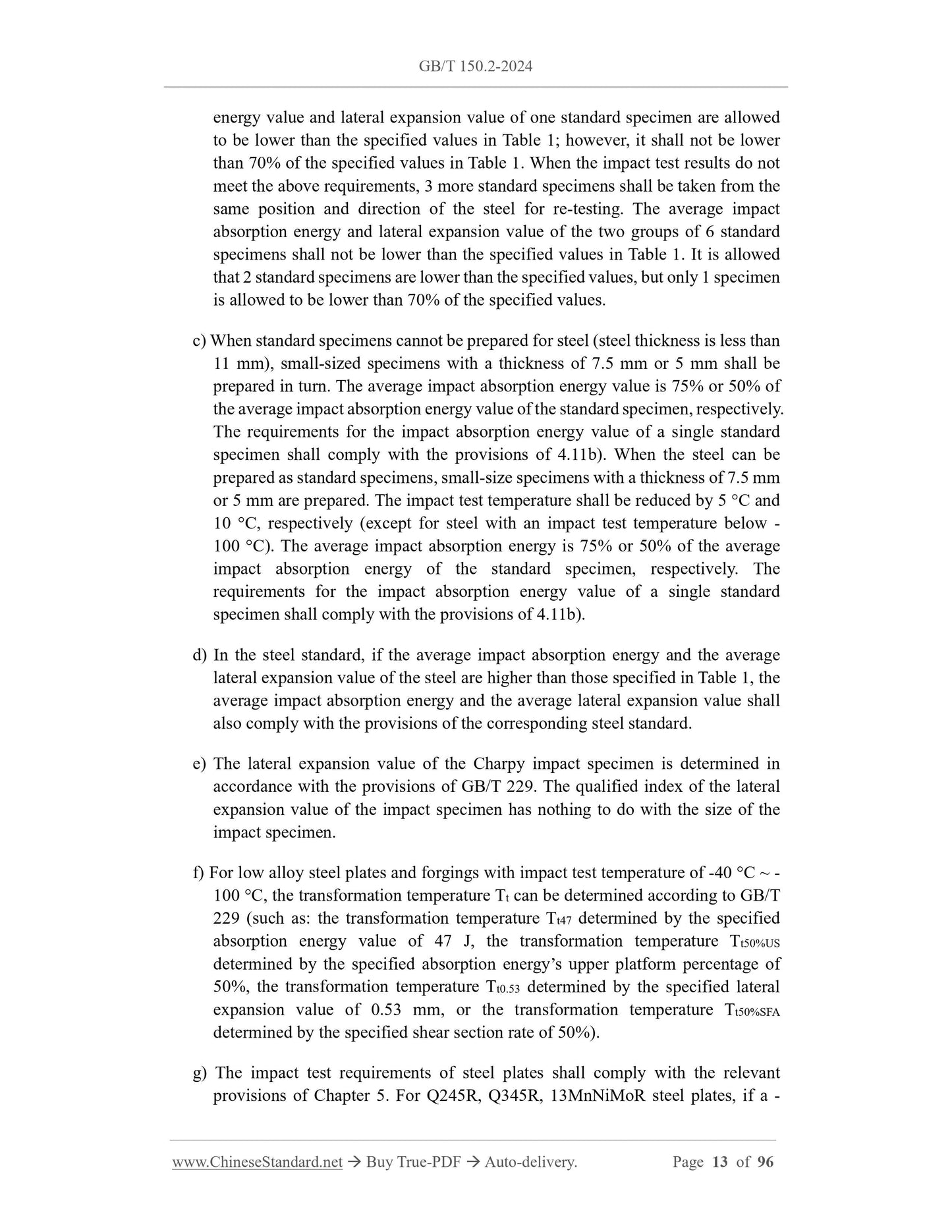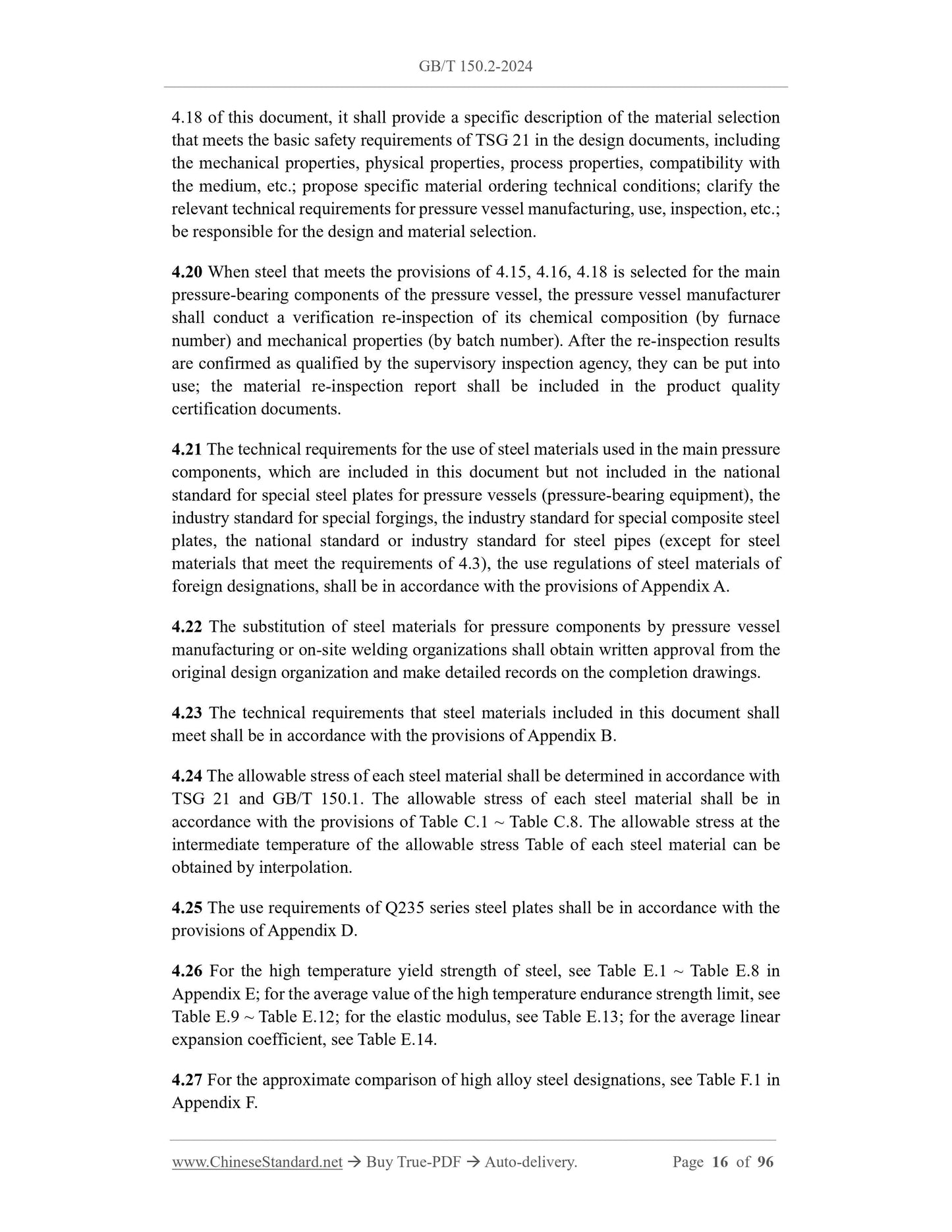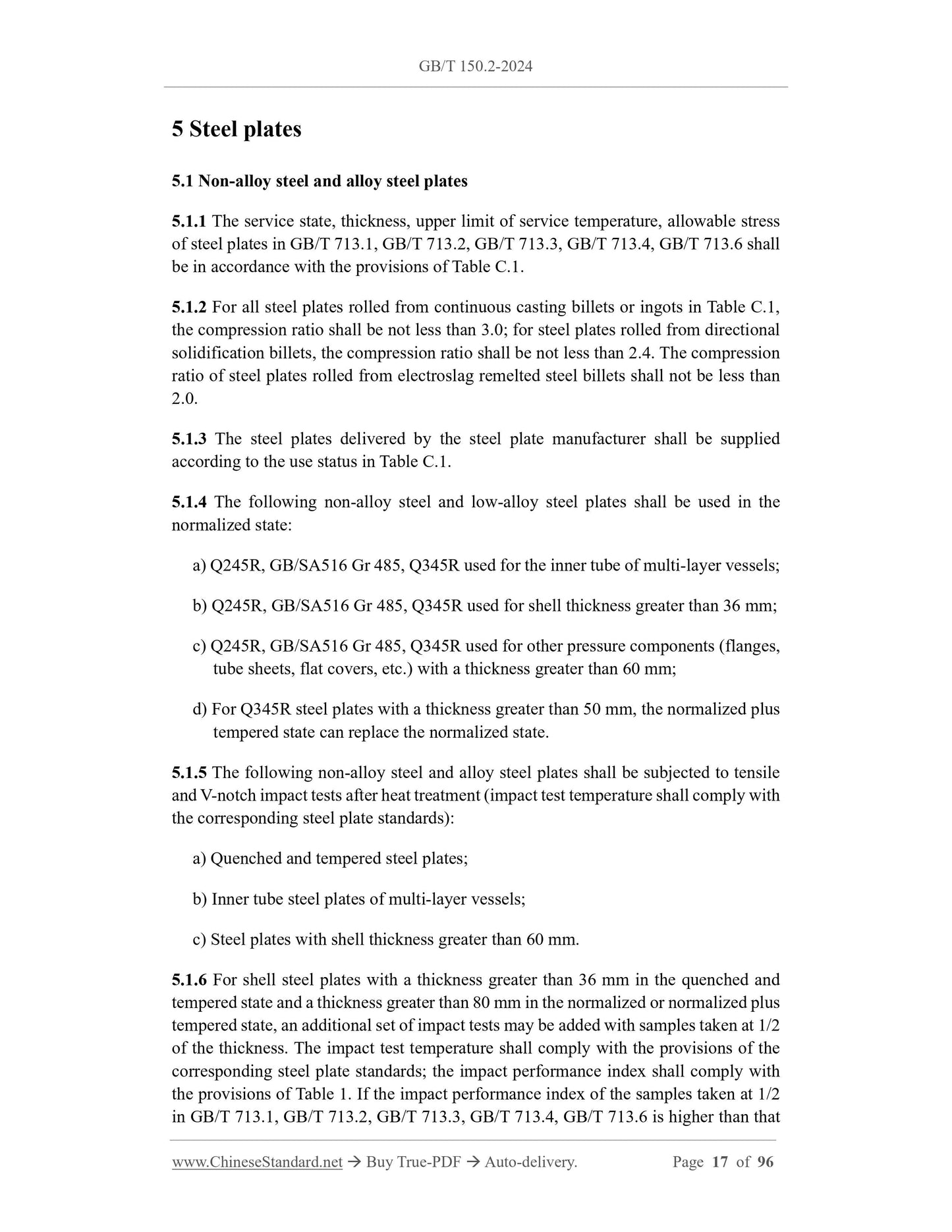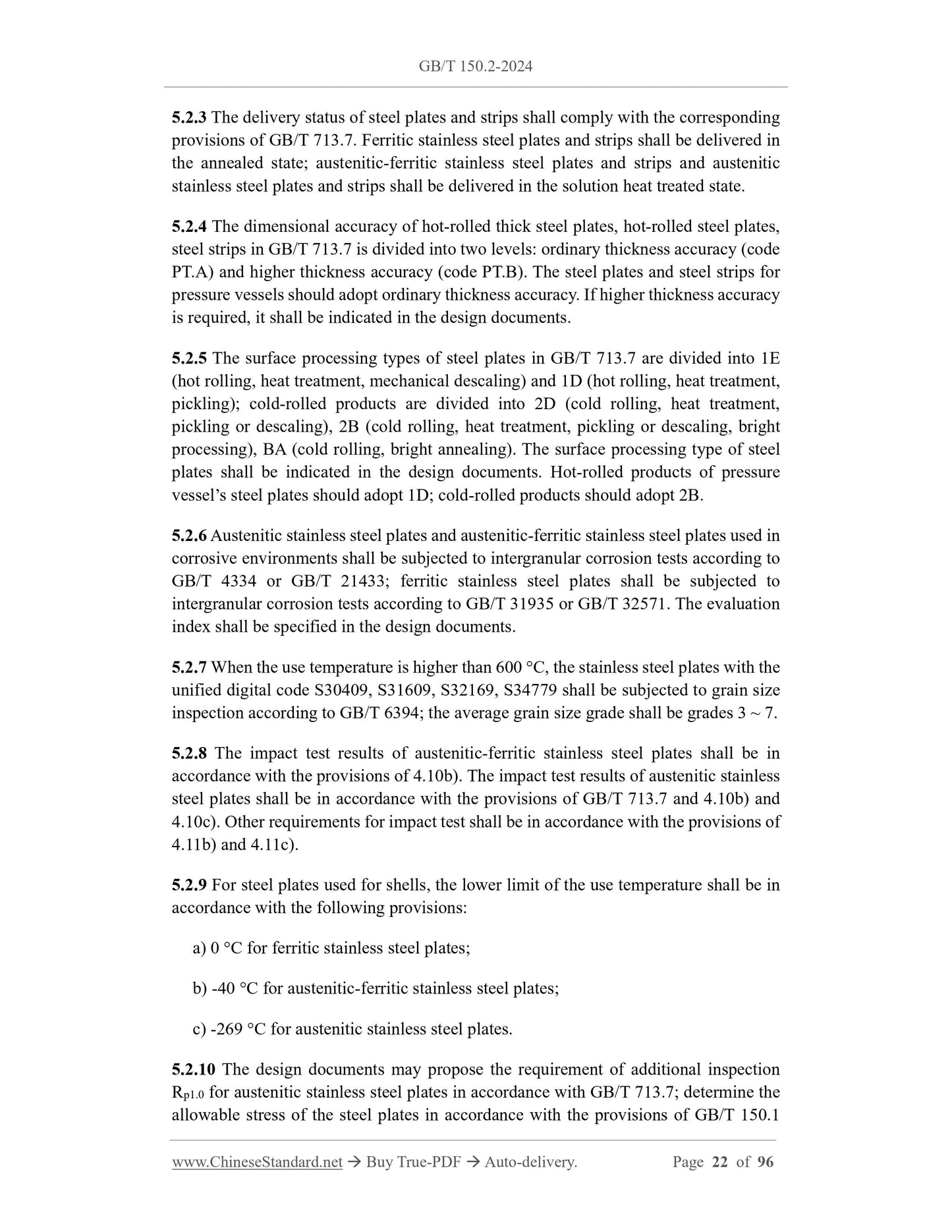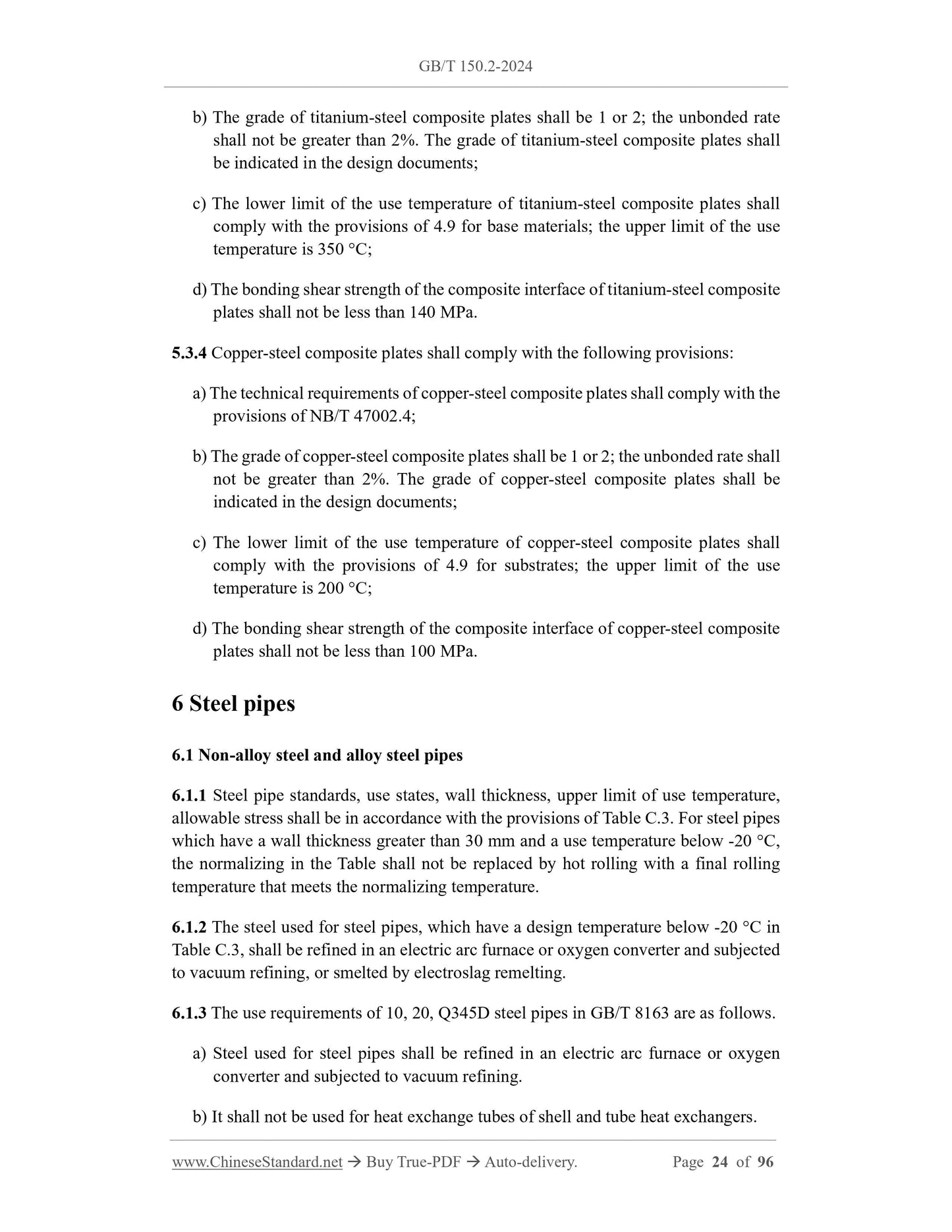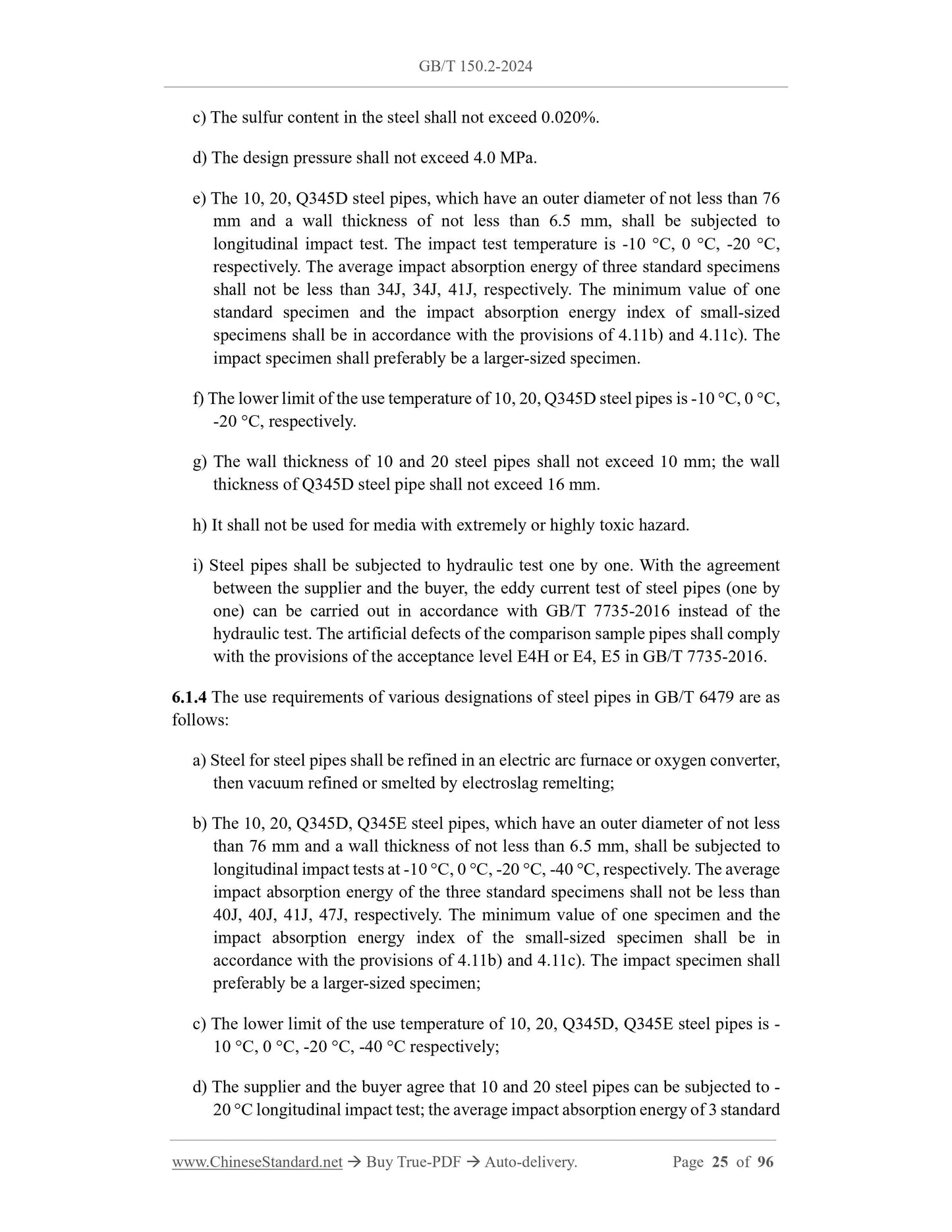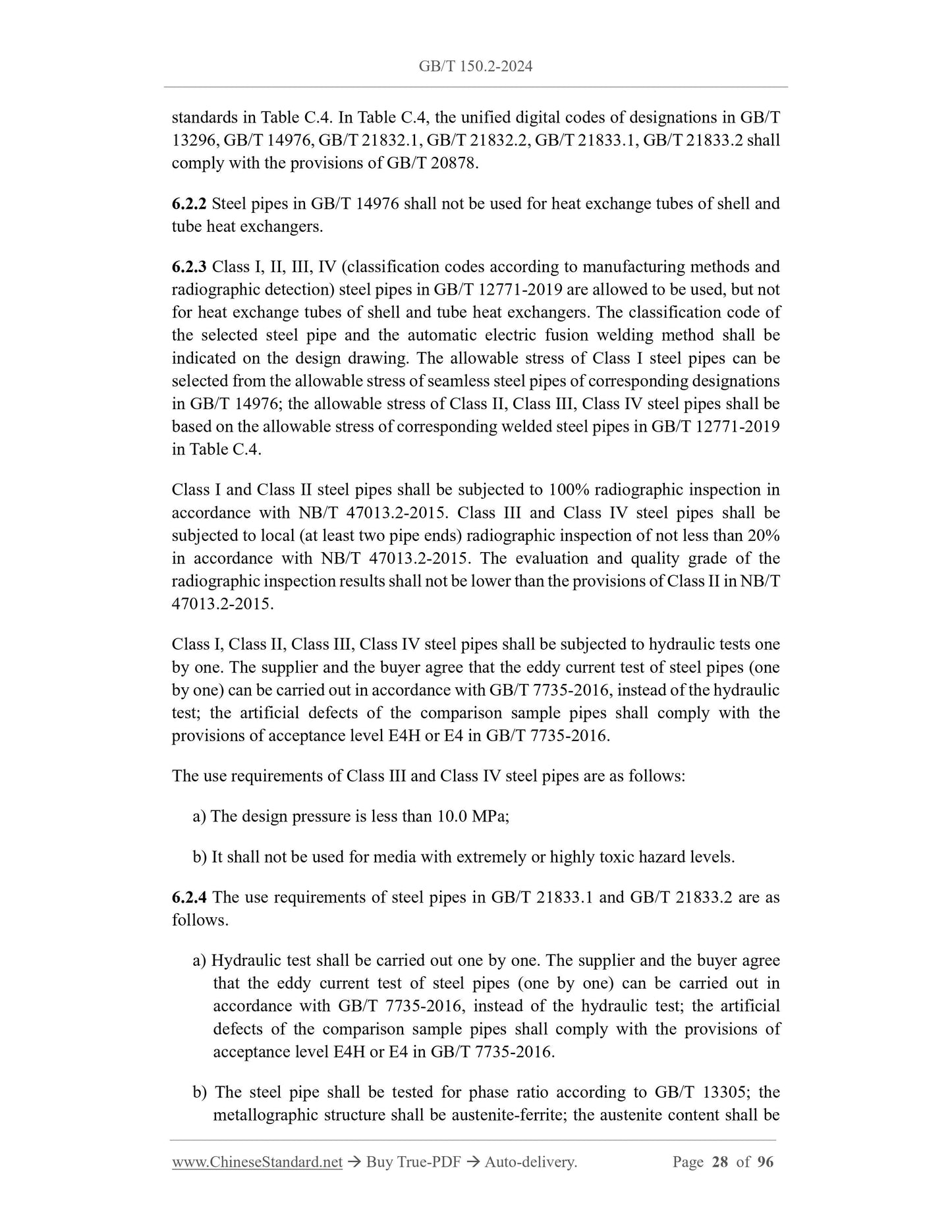1
/
of
12
www.ChineseStandard.us -- Field Test Asia Pte. Ltd.
GB/T 150.2-2024 English PDF (GB/T150.2-2024)
GB/T 150.2-2024 English PDF (GB/T150.2-2024)
Regular price
$655.00
Regular price
Sale price
$655.00
Unit price
/
per
Shipping calculated at checkout.
Couldn't load pickup availability
GB/T 150.2-2024: Pressure vessels - Part 2: Materials
Delivery: 9 seconds. Download (and Email) true-PDF + Invoice.Get Quotation: Click GB/T 150.2-2024 (Self-service in 1-minute)
Newer / historical versions: GB/T 150.2-2024
Preview True-PDF
Scope
This document specifies the designations and standards of steel materials allowed forpressure components of steel pressure vessels, additional technical requirements for
steel materials, the use range of steel materials (temperature and pressure), the
allowable stress of steel materials, the basic requirements for welding materials.
This document is applicable to pressure vessels, which have a design temperature of -
269 °C ~ 800 °C and a design pressure not exceeding 35 MPa.
This document does not apply to the inapplicable scope specified in GB/T 150.1.
Basic Data
| Standard ID | GB/T 150.2-2024 (GB/T150.2-2024) |
| Description (Translated English) | Pressure vessels - Part 2: Materials |
| Sector / Industry | National Standard (Recommended) |
| Classification of Chinese Standard | J74 |
| Classification of International Standard | 23.020.30 |
| Word Count Estimation | 79,794 |
| Date of Issue | 2024-07-24 |
| Date of Implementation | 2025-02-01 |
| Older Standard (superseded by this standard) | GB/T 150.2-2011 |
| Issuing agency(ies) | State Administration for Market Regulation, China National Standardization Administration |
Share
